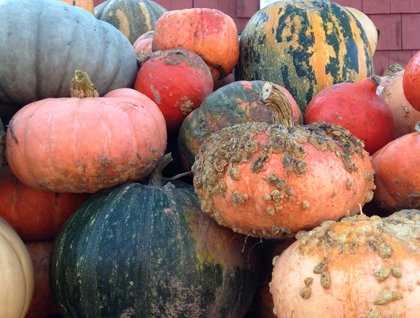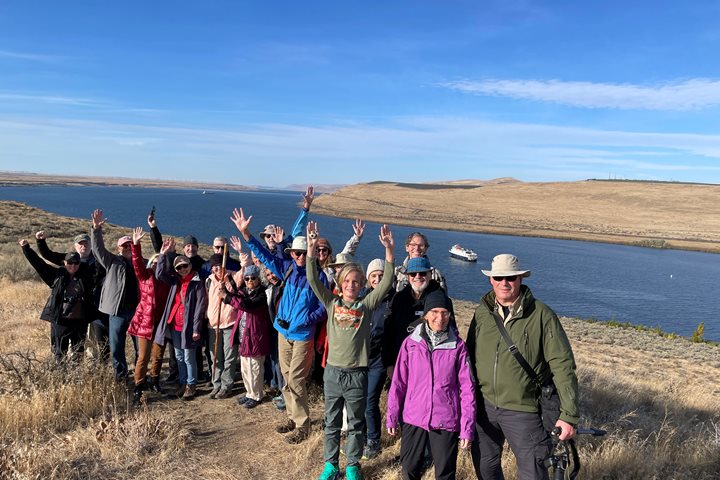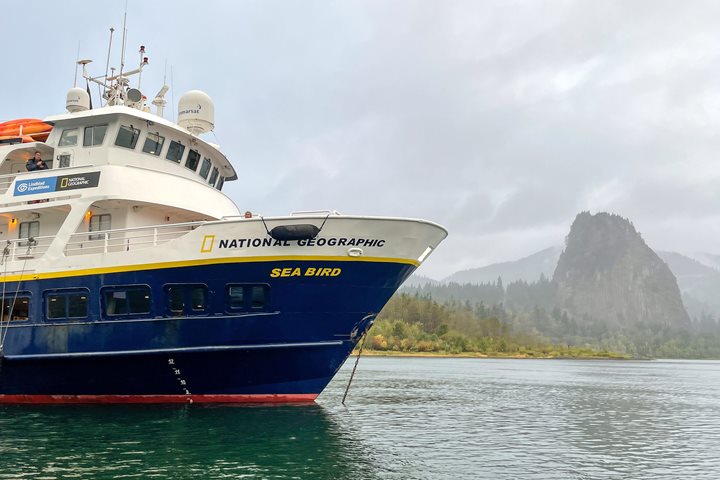As we descended through the locks into the lower Columbia Valley, the dry land farming and imposing geology framing the river began to give way to the lush and productive farmland of the western reaches. As much as exploration is the act of arriving, seeing, touching, and interacting, so too do we explore with our forks. The foods of a region are as much a part of the identity of a place and can tell us much about the current culture of a region and can shed light on how humans have adapted to the geological history that has come to shape a place.
Visible just over the cliffs we began to see the immense apple, cherry, and pear orchards, lines of fruit trees standing sentinel over the rolling hills. This country is blessed with rich soil deposited over eons by floods and the gentle erosion of time.
Oregon is known for the uniqueness of its produce. It is the largest producer of hazelnuts, blackberry, raspberries, and a host of other delicious treats. While we arrived slightly after peak harvest, we were still able to procure a wide variety of the apples and pears that are grown here and to visit some of the orchards that stand in the shadow of Mts. Adams and Hood. The scarlet hued trees perfected the autumn scene as we met the proud families that operate the independent farms just as their families have for generations.
Later, aboard the ship we hosted a wine tasting of some of great examples of Oregon wines. This region is quickly becoming one of the most sought after appellations of world-class wines with a majority of the wines produced from the noble Pinot Noir and Pinot Gris grapes. Wines from this region are terrific at representing the place of their provenance, in wine terminology this is referred to as terroir. Comparing examples of different wines made of the same grapes revealed startlingly different characteristics. Some were rich, smooth, and aromatic on the palate. Others were bright and bracingly refreshing.
We produced a number of small tastes of food to pair with each of the four wines tasted. These bites included ingredients that we had gathered from local farms to further showcase the marriage of taste and place.
One of the great advantages of Lindblad Expeditions-National Geographic voyages is that they use food as a means of exploration to give guests full exposure to the character and flavor of a region. After all, food is the most intimate and celebratory relationship that we have with nature and it is a joy to be able to visit such a beautiful place, learn its history, understand the unique geology that has come to form the place, and then to taste the fruits of that evolution. History is as much about our physical world as it is about how humans have adapted to it. And here along the banks of the Columbia awaits some of the most delicious exploration one can experience.










